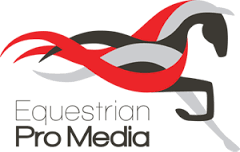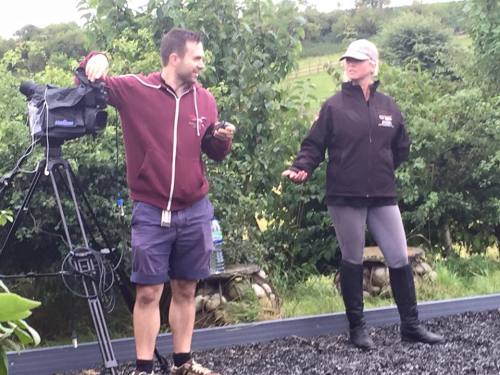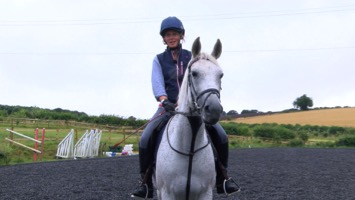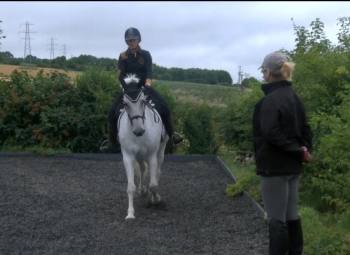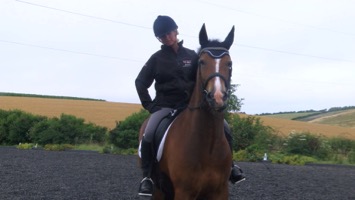Do we really need "more leg"?....
Posted on
More leg??
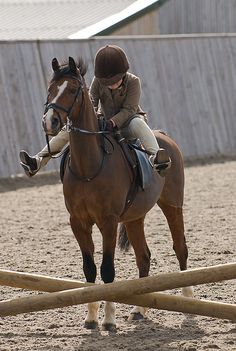
More leg??
(Photo randomly taken from Google images)
“More leg….” We’ve all heard it, that moment you hear it, our instinct is to do just that, use more leg, but is that the answer?...
When we train horses we are asking them to react, whether it be from leg, seat or hand, we are training them to react, even if the horse misunderstands and gives us the wrong answer, it has reacted!
Often seen are riders using the leg every stride the horse takes in an effort to prevent the horse from effectively losing energy. However what we are actually achieving with this is a horse who becomes “dead to the leg” or “not listening” to the leg aid. When the horse becomes dead to the leg we need to do things differently, by constantly kicking, all we are doing is feeding our own desire to feel like we are at least trying to create energy, but in reality we need to stop using the leg, yes really! “Well if I do that he will grind to a halt” is what I hear next when doing this with some riders, yes, that may well happen because in the horses mind you have effectively trained him to only go when you kick, therefore when you stop, he stops! We have to retrain the way the horse responds, he needs to make some mistakes (stopping because you stopped kicking) and then be asked to go again fairly sharpish, not brutal, but directly, imagine going for a gallop with a friend and you want to beat them off the start line! The horse is IMMEDIATELY rewarded with a pat/stroke/soft voice, just the way we train from being started, respond – reward, although when retraining from being “dead to the leg” it can be a longer journey with some horses. Eventually the horse will understand that your leg doesn’t actually make him go, he can go for himself, with minimal effort from you!
Riders can often cause a horse to be “dead” just from nagging unknowingly, I always notice what riders are doing when at competitions/events in the collecting ring, also watching people out hacking, often the horses are going about their jobs while the riders leg is constantly nudging/touching/kicking, even worse with bad leg positions and the rider is wearing spurs *cringes at this image* the horse is literally being spurred with every movement it takes! Not all riders are guilty, but the next time you are out, count how often the horse you are watching changes the way it goes due to the rider’s leg usage, believe me the frequency used for the desired result surprises me!
“But I don’t know I’m using my leg that much” a (sadly) frequent response from riders when they are made aware of it! No one is perfect, well unless you are Charlotte Dujardin!! But some ways to start:
1) Film yourself riding and count how many times your leg touches the horse Say the word “now” or something similar every time you touch the horse, the results can be surprising!
2) Find yourself a good trainer who can help you if your position is the cause, bad legs can often be from poor posture
3) Get a lesson on a schoolmaster so you can feel what a non “dead to the leg” horse feels like, this can help motivate you during the reschooling process
4) Do a test – ask for trot for example, take your leg away completely, this is hard for some, and count how many steps your horse takes before you come back to walk, then try and get an extra step on the next try, then add another etc..
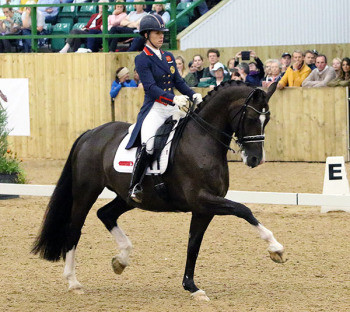
Charlotte Dujardin and Valegro showing a lovley "non dead to the leg" way of going!!
Photo taken randomly from Google images.
So really, “more leg” should be “more reaction”, remember – Less is more!
